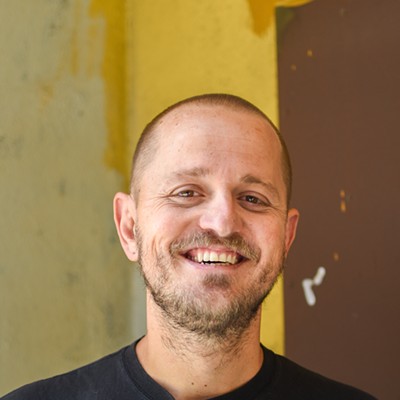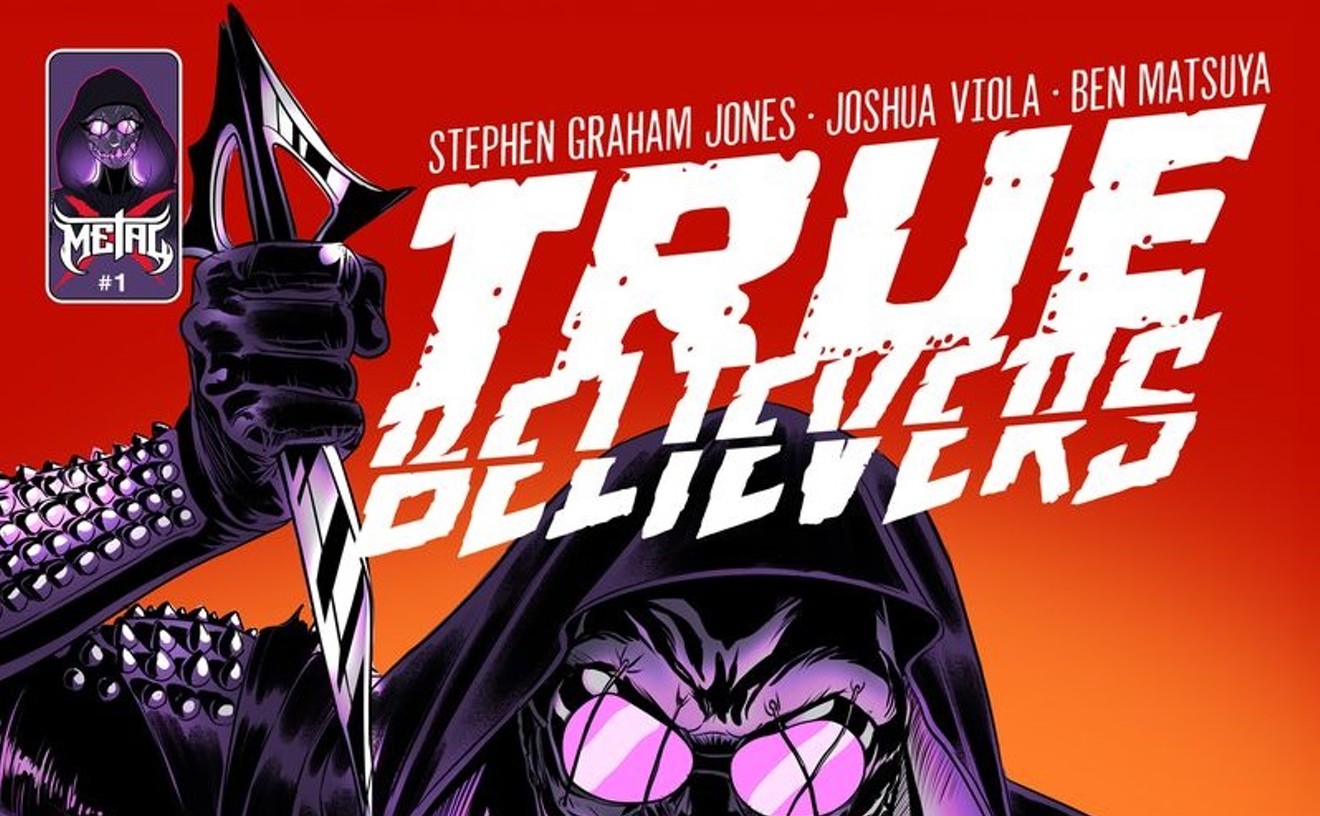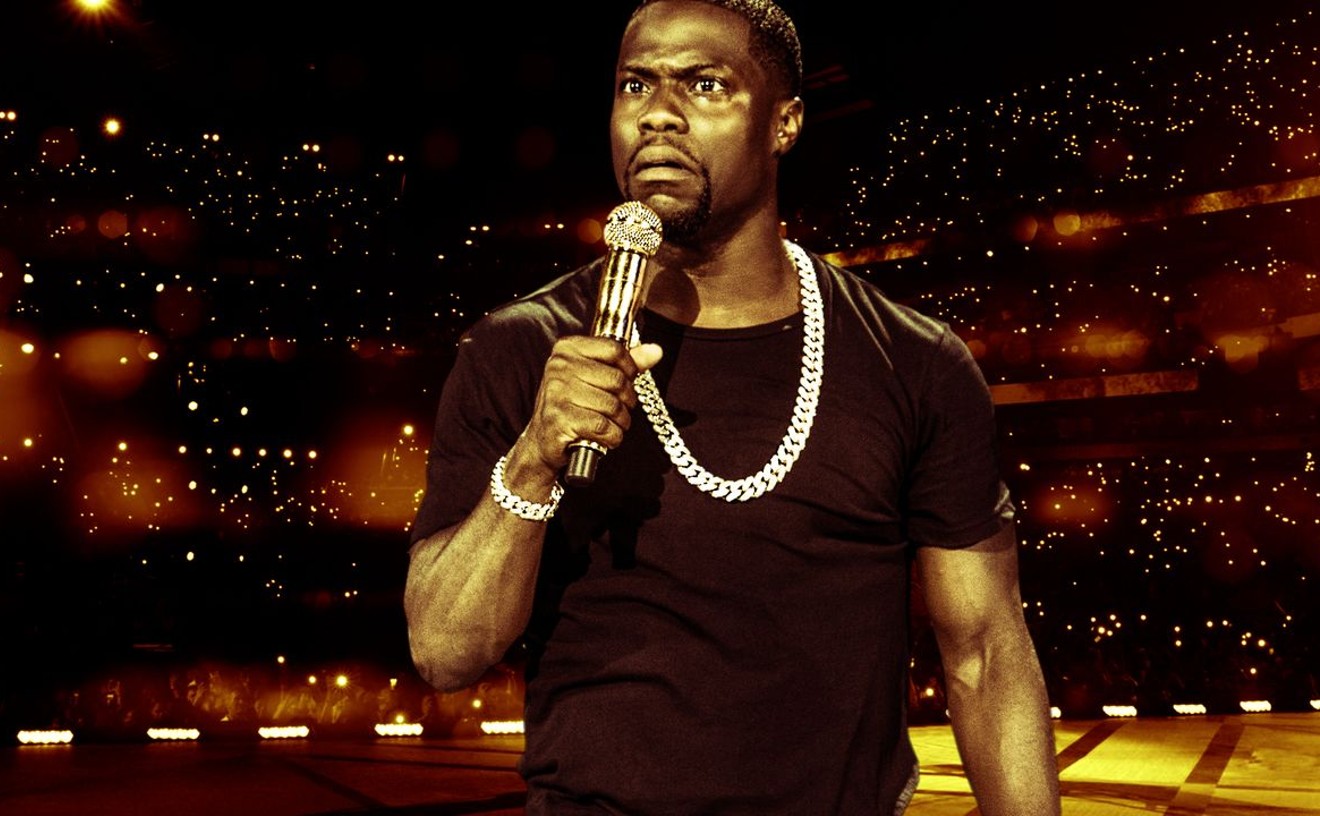Westword: Talk about what Captured in Film is.
David Rutherford: It's a collaborative project between the Musica Sacra Chamber Orchestra, Buntport Theater and CU Denver Film. It's part of our overarching season theme of looking at time from different points of view through the lens of music. In one of our concerts, we looked at 1931, so everything was connected, somehow, to 1931 and looking from that perspective. There was one called Frozen in Time, where if you took any one moment of your life, what would that moment sound like in music and how could music give you a better understanding of what was going on in that part of your life? This one is about how certain moments get captured in film. We've got these great moments from the 1910s and 1920s that were captured on film. It's just great fun and as accessible and fun to do now as they were back in 1920.
Part of my background is that I've done quite a bit of silent film -- presenting it in an authentic way, in the way that it was done back in the '20s, but not as a stand-alone feature itself. In order to get audience for films, they were first introduced as a part of other live entertainment. The way the program works, we have three silent films separated by live vaudeville and melodrama. It's exactly how it would have been done in the early '20s. I approached Buntport Theater with this project to provide the live elements between the films. They've done a fabulous job. It's not only that they're doing the live aspects of the presentation, but they've also created a third and brand-new film. The first two are from the '20s: Buster Keaton's One Week and Charley Chase's Mighty Like a Moose. Together, they created a third and final film -- a film which wraps up the whole shebang.
In the spirit of vaudeville and melodrama, we'll probably call a person up from the audience to be a part of the drama. I wanted to put things together so that everybody there is a part of what's going on. So having somebody come up, a person, a volunteer from the audience to come up and be a part of the show was important to me in putting the project together.
Read on for more from David Rutherford.
What is the relationship between the vaudeville performances and the final film?
In the live vaudeville part, you meet the characters who are in the final film. We see them live and then we see them on screen. The film, the one that we made, The Tie, does stand on its own by itself. It's kind of fun, because to get more of the backstory of what's going on in the film, there's the live part. In putting together this film, we've worked with the head of the film department at CU Denver. He has worked with students of his, and they've put together this terrific film.
Let me tell you about the other two films, which are really excellent. Buster Keaton's One Week, the premise of this film is that it's a young couple. They just got married. Somebody has given them a house as a wedding present. The trouble is, they have to build it themselves. The young bride's former suitor, who is still put out, unbeknownst to them, has jumbled the instructions for building the house. Over the course of a week, they build a Rube Goldberg or Dr. Seuss-looking contraption house. It's very funny.
The second one is Mighty Like a Moose by Charley Chase. In my opinion, it's one of the funniest twenty-minute silent reels I've ever seen. The premise here is that there is a couple who is rather homely because of a couple of features. He has buckteeth, and she has a nose like a moose. Together they make a really good moose. Unbeknownst to one another, they schedule themselves to have plastic surgery that winds up being at the same time. He goes off to get his teeth worked on. She goes off for a nose job. On their way home, they actually meet up and don't recognize one another and start to flirt. The situation that ensues is just brilliant. My favorite part is the fifteen seconds of facial acting when it occurs to him that this has been his wife. The multitude of thoughts that go through his head all pass across his face in some of the very best acting I've ever seen.
The orchestra plays during all of this. They also provide music for the live melodrama and vaudeville. It's an evening of family entertainment that you just don't get very much. It's just going to be a hoot.
The thing I like about silent films is that it requires more from the viewer, in that it takes a little more of your imagination. You have to fill in what you normally would here. In modern film, everything is provided for you so it can be a very fast experience. Because you're still reading and creating the sounds of people's voices in your mind or you're following along and not hearing everything, you are creating so much with your own mind. It winds up being extremely engaging and really fun. Whenever I've done silent films for people who've never seen silent films, they're always surprised at just how much fun they had and how engaging it was. Especially with live music.
We're still at the point where people will come out of the woodwork and come up to me after a program and say, "My grandmother used to play piano," or "My grandfather used to play the organ and he always did the music for silent films when they showed." There are still, in living memory, people who were doing this in the '20s for a living. It's very cool. Very nostalgic.
Read on for more from David Rutherford.
Over the past couple decades, we've seen a variety of musical approaches reinterpreting silent film. What is your take? Are you using a traditional score or doing something else?
It's more traditional than you might think. It's not a composed score for the film, but it is compiled. There are treasure troves of different kinds of mood pieces that a compiler can pull from that were all written for silent film. These are short pieces of music that fit together. You compile these together. These books might have three or four numbers that are all hurried. So you get Chase Number 19 or Suspense Number 5. That, along with a classical music selection, are what comprised a score that was being compiled. Instead of keying every last movement or every last thing that happens on the screen, it's more of an overall feeling that lasts for much longer.
Talk about the orchestra itself?
It will be about 34 players. As part of our season each year, we do some of these out-of-the box, nonstandard types of concerts where we do as much as we can to cross genres and to collaborate with other organizations. We've worked with the Denver Art Museum and different choral ensembles. I try to look for organizations that are willing to take a little bit of a risk in figuring out what we can do together. My take is always, how can we get people to engage with great music with fresh ears? How can we present this so that they can leave their prejudices and the stigma of classical music behind? Each season we have standard concerts, but even those are more engaging than where the orchestra just sits there, the conductor comes out, the orchestra plays, and we all go away, and there's no interaction. We treat each of our performances as if the audience has come over to our living room, and we're all sitting in the living room together and experiencing all of this together. That's the goal.
It's interesting to think about how audience engagement strategies might help classical music organizations address the funding crisis they are in.
In classical music, it's a very complex issue. Part of it is that classical artists have held their audiences at arm's length, made them clap at just the right time and sit quietly and then clap between things. Then when we're done, you stand and clap and the orchestra walks off. We've held them at bay for so long.
At the same time, we've now come into a digital age where so many people can have such a close perceived relationship with their favorite artists online, through blogs, through Facebook. You kind of have this chummy feeling of your favorite bands or your favorite solo artists or whatever. This perceived intimacy is something that classical ensembles and artists are just now starting to wake up to. You can't hold people at arm's length. For one thing, they don't know our repertoire so much anymore. We need to do what we can to invite them in and give them a way to experience the music in such a way that we all experienced it as musicians when we were young. We experienced this great music, and it was amazing, and it made us decide to become musicians. Well, that same power is still there.
And kids...when any kid comes in contact with great classical music, they're excited. It's incredible. But this stigma is attached to it, and socially it's deemed uncool. We need to figure out how to get past that un-coolness and invite people in to listen to something that is intimidating and that they don't know all that much about. We have to get rid of the stigma. We have to get rid of the hoity-toity nature, this elitism that we've been holding onto. It's a legacy from early- to mid-twentieth century when conductors and composers and classical music stars were considered near-gods. That doesn't work out so well in the Facebook world.
My goal is to break down that barrier, this gulf between audience and performers, and to help people understand that the experience that happens within any live performance, the audience themselves are just as integral to that experience as the performers. It's a uniquely human experience. There are no other creatures in the world that do this. For some reason, it's something that we need to do. We need to experience these live things, this creation of music or theater or dance or whatever. This is something that we absolutely, as a species, have to do. Everybody is a part of that. For too long, audiences have been pushed out as if they're not really a part of it. They're just witnessing it happen. That's one of the big things that we need to do is get past that. To that end, great collaborations help people to understand connections between the different kinds of art and change the rules of engagement just enough so that people are willing to drop their guard and listen with fresh ears.
Join Rutherford for an evening of silent cinema, vaudeville and classical music, Friday, April 25 and Saturday, April 26, at the Holiday Event Center, 2644 West 32nd Avenue. Tickets, $24, are available online at augustanaarts.org or by calling 303-388-4962.
Follow me on Twitter: @kyle_a_harris











